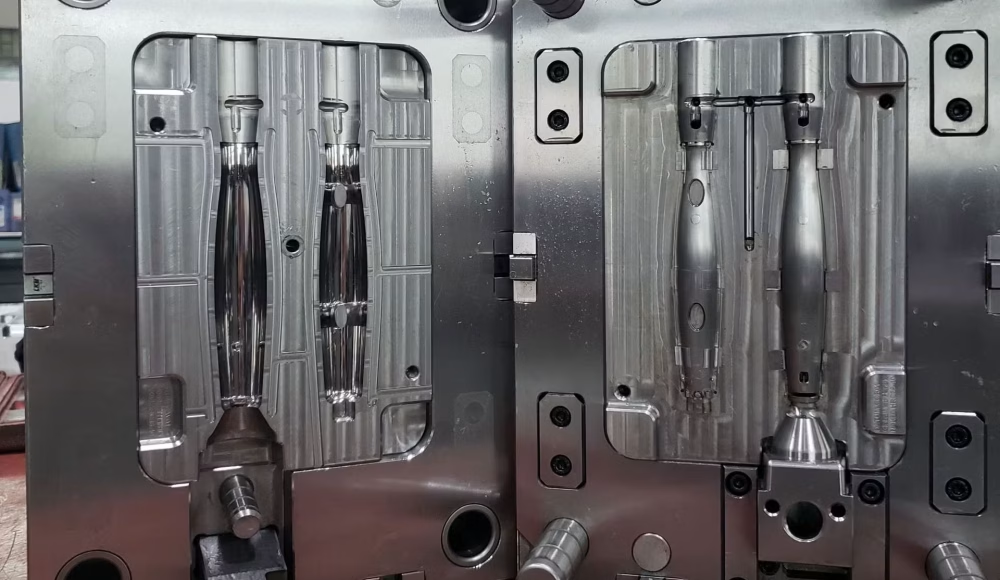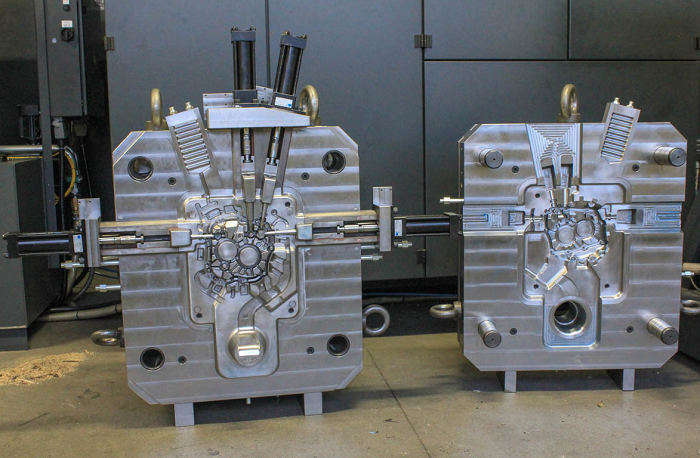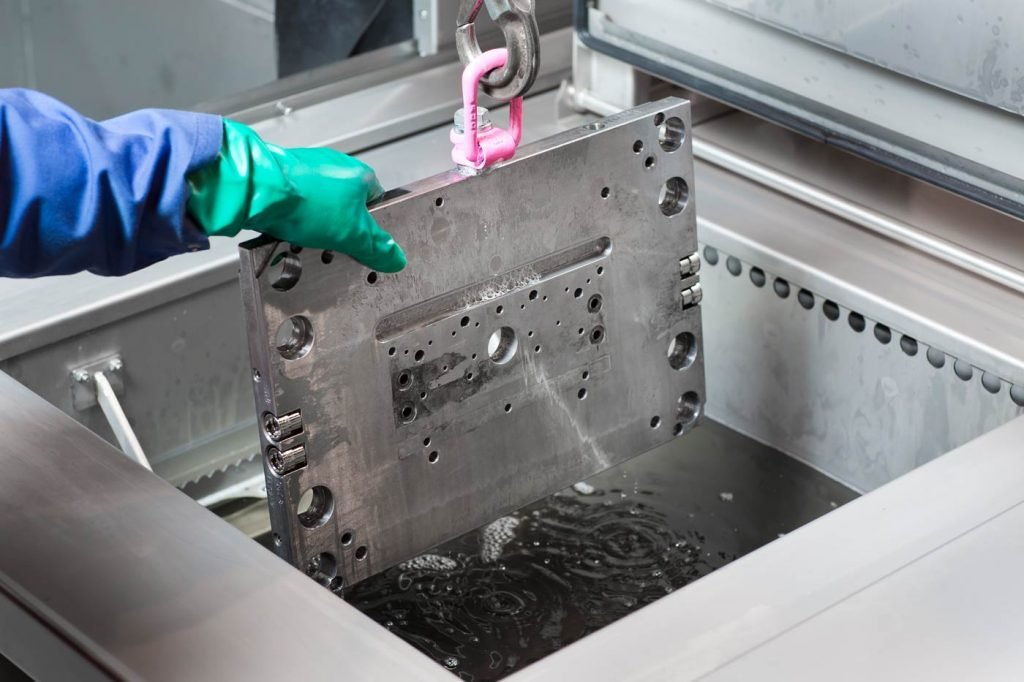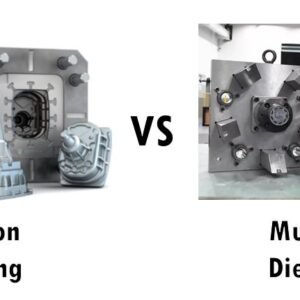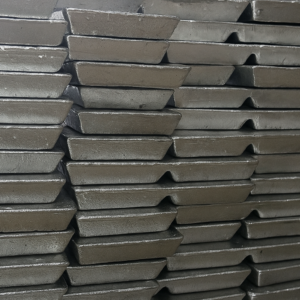No mundo da fabricação de precisão, fundição sob pressão se destaca como um dos métodos mais eficientes e repetíveis para produzir componentes metálicos complexos. Central para este processo é o Ferramenta de fundição-Um molde de precisão de precisão construído para suportar injeções de alta pressão de metal fundido. Enquanto as ferramentas representam um investimento significativo, Entendendo o Fatores que influenciam o custo da ferramenta de fundição pode ajudá -lo a tomar melhores decisões, reduzir o desperdício, e maximizar seu retorno do investimento sobre o ciclo de vida do produto.
Por que as ferramentas de elenco de morrer são caras
As ferramentas de fundição de fundição são submetidas a condições extremas- altos temperaturas, pressão intensa, e estresse mecânico constante. Como resultado, as ferramentas devem ser construídas a partir de Aços especiais de ferramentas de alta qualidade, Projetado com precisão para cada projeto. As matrizes de alta qualidade podem custar mais inicialmente, mas com o pagamento ao longo do tempo devido ao tempo de inatividade reduzido, Menos defeitos, e vida de ferramenta mais longa.
Fatores -chave que influenciam o custo de ferramentas
Design da ferramenta: A base do sucesso a longo prazo
A fase de design é o fator mais crítico na determinação de ambos custo e desempenho. Uma ferramenta de fundição bem projetada garante qualidade consistente do produto, Tempos de ciclo ideais, e operações secundárias mínimas. Design de ferramenta ruim, por outro lado, muitas vezes leva a:
Partes defeituosas
Clarão, porosidade, e problemas de encolhimento
Taxas de sucata mais altas
Custos de usinagem e acabamento aumentados
Design para fabricação (DFM) Princípios devem ser aplicados cedo. Fatores como ângulos de rascunho, espessura da parede, linhas de separação, e sistemas de ejeção devem ser otimizados usando o software de modelagem e simulação 3D. É aconselhável Invista em ferramentas de validação e simulação de projeto Antes de cortar aço.
Sistemas de corredor e ventilação: Controlando o fluxo de metal
Um bom sistema de corredor garante que o metal fundido seja entregue de maneira uniforme e rápida na cavidade do molde. A ventilação adequada permite que os gases escapem, prevenção de ar preso e preenchimentos incompletos.
As equipes de design modernas usam software de simulação de fundição para:
Prever e visualizar o comportamento do fluxo fundido
Identifique possíveis áreas de porosidade
Otimizar os posicionamentos de portão e transbordamento
As melhorias de projeto feitas nesta fase reduzem significativamente o risco de problemas de produção e redesenhos de ferramentas, diminuindo o custo geral do projeto.
Projeto de circuito de refrigeração: Gerenciamento térmico para qualidade e longevidade
Durante o elenco, O metal fundido esfria e solidifica no molde. Se o resfriamento for irregular ou mal controlado, O resultado pode ser tensões internas, deformação, ou tempos de ciclo mais lentos.
Circuitos de resfriamento - canais embutidos no molde para fluxo de refrigerante - Help Gerencia a temperatura. Alguns fabricantes reduziram os custos colocando canais de refrigeração genéricos, mas Análise térmica estrategicamente projetada resulta em:
Melhor consistência da parte
Tempos de resfriamento mais curtos
Vida útil prolongada da ferramenta devido a choque térmico reduzido
Enquanto a análise térmica aumenta o custo inicial, Melhora significativamente a produtividade e a qualidade da peça ao longo do tempo.
Inserções de ferramentas: Design inteligente para eficiência de custos
As inserções de ferramentas são componentes modulares Dentro de um molde de fundição maior. Em vez de substituir a ferramenta inteira devido ao desgaste ou erosão, Somente a inserção precisa ser substituída.
Inserções oferecem várias vantagens:
Menor custo de manutenção a longo prazo
Flexibilidade para adaptar ou modificar o design da ferramenta
Recuperação de reparo mais rápido
Qualidade de peça consistente ao longo da vida da ferramenta
Áreas sujeitas a alto desgaste, como portões e cantos, deve ser equipado com inserções substituíveis. Os fabricantes de ferramentas experientes podem prever zonas de desgaste e incorporar inserções de acordo.
Material da ferramenta: Grau de aço correspondente à aplicação
A seleção de grau de aço da ferramenta afeta diretamente a durabilidade e o custo. Materiais comumente usados incluem:
Aço da ferramenta H13: Oferece um bom equilíbrio de resistência ao calor e resistência. Ideal para alumínio e magnésio.
H21 / H22: Melhor para operações de temperatura superior como zinco ou moldagem de bronze.
Aços de ferramentas em pó (por exemplo., CPM notas): Aços premium com resistência de desgaste superior, ideal para longas corridas de produção.
O material certo depende de:
Material de fundição (alumínio, zinco, magnésio)
Vida de ferramenta esperada (Número de tiros)
Complexidade de parte e requisitos de acabamento
Gastar mais em aço de alta qualidade pode economizar dezenas de milhares em custos de reconstrução de ferramentas durante a produção de alto volume.
Manutenção e longevidade: Protegendo seu investimento em ferramentas
Não importa o quão bem sua ferramenta seja projetada, Ele inevitavelmente se desgastará devido aos ciclos de alta pressão e térmicos. A manutenção regular é fundamental para prolongar a vida útil da ferramenta e garantir a qualidade da peça consistente.
Melhores práticas para a manutenção da ferramenta de matriz:
Limpe as ferramentas completamente após as execuções de produção.
Inspecione o desgaste, rachaduras, ou fadiga térmica.
Aplique revestimentos de proteção (por exemplo., nitretagem, PVD).
Use procedimentos de armazenamento adequados para evitar corrosão e danos.
Manutenção de rotina é muito mais econômico do que reparos de emergência ou substituições completas de ferramentas.
Prolongando a vida útil da ferramenta: Matéria de design e parceria
A longevidade de uma ferramenta não é apenas material - é sobre o quão bem a ferramenta é projetado, construído, e gerenciado Ao longo de sua vida de serviço.
Em parceria com um fornecedor experiente de fundição pode resultar em:
Avaliações preditivas de vida da ferramenta
Recursos de compensação de desgaste embutidos
Colocações de inserção otimizadas
Decisões orientadas a dados sobre reformas ou substituições
Se você está executando a produção de alto volume (por exemplo., >100,000 tiros/ano), Essas economias aumentam rapidamente.
Conclusão: Invista com sabedoria, Colher as recompensas
Enquanto os custos de ferramentas de fundição podem parecer altos no início, Ferramentas de qualidade é um investimento, Não é uma despesa. A abordagem correta para o design de ferramentas, materiais, inserções, e a manutenção pode resultar em:
Menor custo de produção por parte
Menos defeitos e etapas de pós-processamento
Aumento da produção com qualidade consistente
Tempo de vida útil mais longo e frequência de substituição reduzida
No Tops de precisão, Trabalhamos em estreita colaboração com nossos clientes para equilibrar a qualidade e o custo. Nossa experiente equipe de engenharia aproveita a simulação 3D, Aços de alto desempenho, e design de ferramentas inteligente para fornecer confiável, Soluções de produção de alto volume.
📞 Contate-nos hoje Para saber mais sobre as opções de ferramentas de fundição, ou para obter uma cotação adaptada às suas necessidades de design e produção.
Perguntas frequentes
1. Por que é ferramenta de elenco é tão caro?
As ferramentas de fundição de matrizes devem suportar temperaturas extremas e alta pressão, que requer design de precisão e o uso de aços de ferramentas caros. O alto custo inicial é equilibrado por custos mais baixos de longo prazo através da longevidade consistente da produção e da ferramenta.
2. Quanto tempo dura uma ferramenta de fundição?
A vida da ferramenta varia de acordo com o material e o design, mas pode variar de 50,000 para superar 1,000,000 tiros. Design adequado, manutenção, E o uso de inserções pode estender bastante a vida útil de uma ferramenta.
3. As ferramentas podem ser reutilizadas para diferentes partes?
Geralmente, não. As ferramentas de fundição são feitas sob medida para geometrias específicas. No entanto, Ferramentas modulares e inserções intercambiáveis podem ser usadas para criar variantes de partes semelhantes.
4. Como posso reduzir os custos das ferramentas de fundição sem comprometer a qualidade?
Focar em Design para fabricação (DFM), Use o software de simulação cedo, Escolha materiais duráveis, e implementar inserções removíveis. A parceria com um lançador de matriz experiente também pode levar a soluções de ferramentas econômicas e otimizadas.
5. Quais materiais são mais comumente usados para ferramentas de fundição de matrizes?
Aço da ferramenta H13 é o mais comum devido à sua alta resistência, Resistência à fadiga térmica, e acessibilidade. Aços premium como H21 ou CPM Notas podem ser usadas para aplicações mais exigentes ou corridas mais longas.
Leia mais:
Serviços de fundição de matriz
Otimizando o molde de fundição do dado
Alcançando zero ângulo de rascunho

